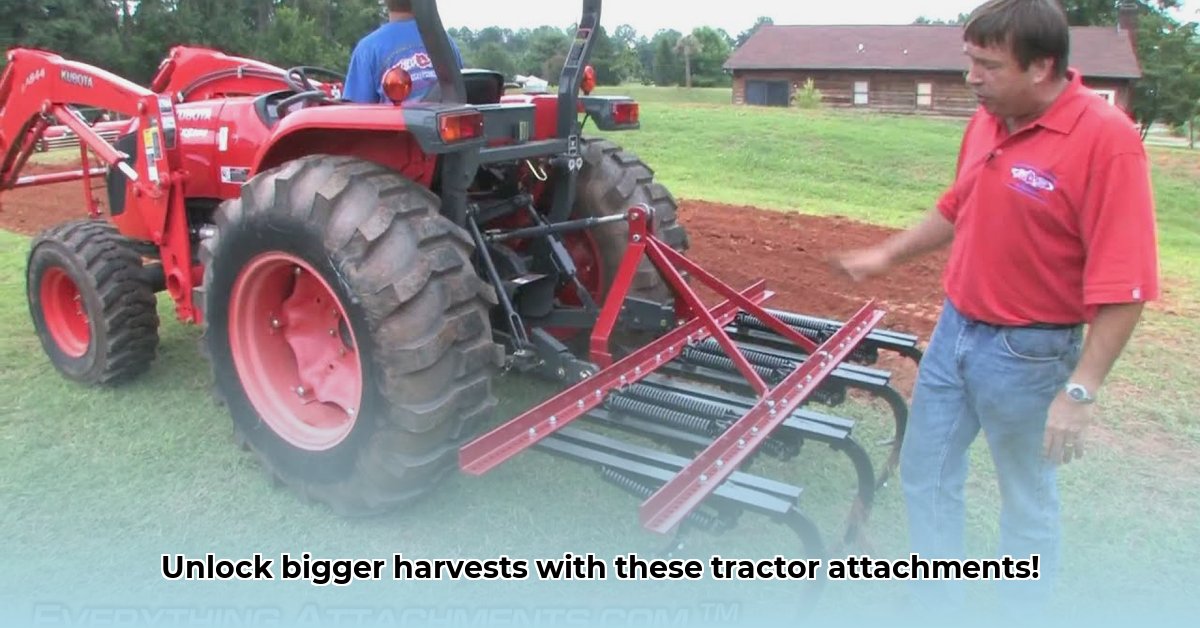
Cultivator Tractor Attachments: Your Key to a Bumper Harvest
Choosing the right cultivator tractor attachment is crucial for maximizing your harvest while promoting sustainable farming practices. This guide will help you select the best attachment for your specific needs, considering soil type, crop type, farm size, budget, and environmental impact. The right choice can significantly impact your yield and the long-term health of your land. Are you ready to optimize your soil preparation? For more information on Kubota tractor attachments, check out this helpful resource.
Understanding Your Soil: The Foundation of Success
Before selecting a cultivator attachment, understanding your soil type is paramount. Different soils require different tillage methods. Heavy clay soils benefit from deep tillage to improve drainage and aeration, while lighter sandy soils may only need light surface smoothing. A simple soil test from your local agricultural extension office can provide valuable information. What type of soil dominates your farm? This question is fundamental to selecting the right tool.
Tool Time: Exploring Cultivator Attachment Options
Several cultivator attachments cater to various soil conditions and farming practices. Let's explore some popular choices:
Rotary Tillers: These pulverize the soil, creating a fine seedbed ideal for smaller gardens and preparing seedbeds for planting. However, they consume more fuel and may not be suitable for heavy clay soils.
Chisel Plows: These deep-working implements break up compacted soil, improving drainage and aeration. They're excellent for larger operations and heavy soils but may not be necessary for lighter soils.
Spring-Tooth Harrows: These smooth and level the soil surface, removing clods and creating an even seedbed after plowing. They are cost-effective and suitable for many soil types.
Disk Harrows: These cut and mix the soil, controlling weeds and preparing the seedbed. They offer versatility and work well on various soil types, striking a balance between tillage and soil structure preservation.
(Diagrams or images of each attachment would be included here)
Finding Your Perfect Match: A Decision-Making Framework
Choosing the right attachment involves considering several factors:
Soil Type: Clay soils require deep tillage (e.g., chisel plow) to improve drainage; sandy soils may only need light smoothing (e.g., spring-tooth harrow).
Crop Type: Deep-rooted crops (e.g., potatoes) need deeper tillage than shallow-rooted crops (e.g., lettuce). The tillage requirements directly relate to the root systems.
Farm Size & Scale: Small gardens require smaller, simpler attachments; large farms need larger, more powerful implements. Matching scale is vital for efficiency.
Budget: Consider initial costs, maintenance, fuel consumption, and potential return on investment (ROI) when making your decision. A balance between cost and long-term benefits matters.
Environmental Impact: Minimize soil compaction and erosion by selecting attachments that cause minimal soil disturbance. Reduced tillage conserves soil health.
Keeping Your Attachment in Top Shape: Maintenance and Safety
Regular maintenance is vital for longevity and efficiency. Sharpen or replace worn parts promptly, and inspect your attachment before each use. Always follow the manufacturer's instructions. Prioritize safety by wearing appropriate protective gear (eye protection, gloves, sturdy boots) and receive proper training before operation. Safe operation prevents accidents.
Real-World Success: Case Studies (Optional)
(Include real-world examples illustrating the benefits of specific attachments. These should include verifiable data and quantifiable results.)
Conclusion: Sustainable Soil Preparation for a Bountiful Harvest
Selecting the right cultivator attachment is a crucial investment for sustainable farming. Consider your soil type, crops, farm size, budget and environmental impact before making a decision. Remember, ongoing research adapts your methods for optimal results. Are you ready to optimize your farm's productivity through informed soil preparation?